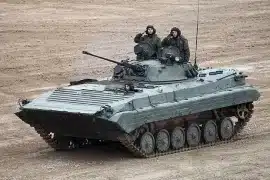The global arms trade is a significant aspect of geopolitics and international relations. As countries strive to maintain their security and assert their influence, the demand for military hardware remains high. In this article, we delve into the top 10 biggest arms importers in the world in 2024, analyzing the factors behind their substantial defense procurement. The 10 largest arms importers in the world in 2024 are India, Saudi Arabia, Qatar, Ukraine, Pakistan, Japan, Egypt, Australia, South Korea and China.
List of the 10 largest arms importers in the world
The 10 biggest arms importers in the world in 2024 are India, Saudi Arabia, Qatar, Ukraine, Pakistan, Japan, Egypt, Australia, South Korea and China.
India, the largest arms importer in the world
India has been a significant player in the global arms import market for several decades. Tensions with Pakistan and China, have been major drivers of India’s demand for arms. In fact, India has held the position of the world’s largest importer of major arms since 1993.
India experienced a 4.7% increase in arms imports between 2014-18 and 2019-23. India’s share of total global arms imports remained at 9.8% percent.
Russia has been the largest supplier of arms to India. It dominates the market in both 2014-18 and 2019-23. But its share of India’s arms imports decreased from 58% to 36% percent during this period.
France emerged as a significant arms supplier (33%) to India in the period of 2019-23. It surpassed the United States (13%) to become the second-largest supplier. India’s arms imports from France saw an increase of 489 percent between 2013-17 and 2018-22. India has procured 62 combat aircraft and 4 submarines from France.
India has undertaken initiatives to replace imports with domestically designed and produced weapons systems. These efforts align with India’s broader objectives of strengthening its defense industrial base, achieving self-reliance in defense manufacturing, and reducing reliance on foreign suppliers.
Saudi Arabia, the 2nd largest arms importer
As a major regional power, Saudi Arabia relies heavily on arms imports to maintain its military dominance. The country’s defense needs are primarily driven by its concerns regarding regional stability and maintaining a strategic edge over its rivals.
Saudi Arabia has consistently held the position of the world’s second-largest arms importer during the period of 2019-23, receiving a significant share of global arms imports at 8.4%. The United States emerges as the primary supplier, accounting for a substantial 75% of Saudi Arabia’s arms imports.
Qatar, the 3rd biggest arms importer
Qatar’s rapid rise as a regional power in the Middle East has necessitated substantial defense procurement. The country has sought to bolster its military capabilities and security partnerships in the face of regional challenges and evolving geopolitical dynamics.
Qatar has experienced a remarkable surge in arms imports, propelling it to become the world’s third-largest arms importer. Between 2014-18 and 2019-23, Qatar’s arms imports increased by an impressive 396 percent. During the period of 2019-23, the United States emerged as the primary supplier. It accounted for 45% of Qatar’s arms imports. France followed behind at 25%, with Italy providing 15% of the country’s arms imports. Qatar acquired 36 combat aircraft from France, 36 from the United States, and 8 from the United Kingdom, along with 3 frigates from Italy. The diversification of Qatar’s arms suppliers reflects its strategic approach to acquiring advanced military capabilities from different sources.
Ukraine, the 4th largest arms importer in the world
Ukraine received 23% of Europe’s arms imports in 2019-23. Since the all out Russian invasion in February 2022, Ukraine received major arms from at least 30 states. The United States was the main supplier (39%) of arms to Ukraine followed by Germany (14%) and Poland (13%).
Pakistan, the 5th biggest arms importer in the world
Pakistan has faced long-standing security concerns that have fueled its demand for arms. Between 2014-18 and 2019-23, the country’s arms imports experienced an increase of 43%. In 2019-23, Pakistan accounted for 4.3% of the global total arms imports.
China has emerged as the primary supplier of arms to Pakistan, followed by Sweden (4%) and Turkiye (3.8%). Over 82 percent of Pakistan’s arms imports came from China in the period of 2019-23. This strategic partnership between Pakistan and China has deepened over the years. It encompasses various defense equipment and technology transfers. Shared geopolitical interest is the basis of the two countries’ strong defense relations.
Japan, the 6th biggest arms importer in the world
Japan’s pacifist constitution and its need to address regional security challenges make it a significant arms importer. It seeks to enhance its self-defense capabilities by procuring advanced military technology and equipment. Japan’s expansion of military capabilities is largely driven by the growing tension with China. The country has seen 155% increase in its arms imports between 2014-18 and 2019 -23.
The United States has been Japan’s largest arms supplier since 1950. From 2018 to 2022, the US delivered 29 combat aircraft, making up one-third (33%) of Japan’s arms imports. Japan has additional pending orders for combat aircraft and recently ordered long-range land-attack missiles from the US. In 2019-23, the US represented 97% of Japan’s arms imports.
Japan is currently investing heavily in long-range strike capabilities. On February 14, 2023, Japan’s Defense Minister announced plans to purchase all required Tomahawk cruise missiles in a single transaction in 2023. This consolidated approach highlights Japan’s commitment to enhancing its missile counterstrikes capabilities swiftly.
Egypt
Egypt’s geographical location, regional instability, and counterterrorism efforts contribute to its status as one of the largest arms importers in Africa and the Middle East. The country focuses on modernizing its military forces and strengthening its defense capabilities.
Egypt experience 26% decrease in its arms imports between 2014-18 and 2019-2023. Its main arms supplier was Germany (27%) in 2019-23 followed by Italy (22%), Russia (20%), France (17%) and USA (6.5%).
Amidst maritime disputes in the eastern Mediterranean, Egypt prioritized enhancing its naval capabilities from 2019 to 2023. During this period, Egypt acquired four submarines and received the first of four frigates ordered from Germany. Additionally, they obtained two out of three frigates ordered from France and two frigates from Italy. These acquisitions signify Egypt’s commitment to strengthening its naval fleet in response to regional challenges.
Australia
Australia’s arms import is largely driven by a perceived heightened threat from China. The country experienced a 21% drop in its arms imports between 2014-18 and 2019-23. The United States is the main supplier (80%) of arms to Australia.
In March 2023, Australia announced a significant defense procurement deal. It involves the purchase of three nuclear-powered attack submarines from the United States. The deal is part of a multi-decade plan aimed at bolstering the allies’ presence in the Asia-Pacific region. It would cost Australia around $150 billion. The strategic move comes in response to China’s increasing assertiveness in military affairs.
South Korea
South Korea’s precarious security situation due to the persistent threat from North Korea has led to consistent arms imports. Its objective is to maintain a credible deterrent and ensure the readiness of its armed forces through the acquisition of advanced weaponry.
South Korea has seen 6.5% increase in its arms imports between 2014-1018 and 2019-23.
The strong defense alliance between South Korea and the United States has resulted in extensive military cooperation. The United States delivered 34 combat aircraft to South Korea during 2019-23. It represents 72 percent of South Korean arms imports during the period of 2019-23.
China, the 10th largest arms importer in the world
Although China has made remarkable strides in developing its indigenous defense industry, it remains a significant arms importer. The country imports advanced weapon systems and technology to supplement its domestic production, ensuring it keeps pace with global military advancements.
China’s arms import landscape has seen a major decrease during the period of 2019-23. With a 44% decline in imports from 2014-18 to 2019-23, China accounts for 2.9 percent of the global total arms import. Russia emerges as the dominant supplier (77%) of arms to China. China’s arms imports will decrease further in the the future as it develop its indigenous arms industry.
The strong partnership between China and Russia has facilitated extensive defense cooperation. Russia’s deliveries to China, particularly in the last three years of the period (2020-22), mainly consisted of helicopters and aircraft engines.
China is also the 4th largest arms exporters in the world.
Summary of the 10 largest arms importers in the world in 2024
The biggest arms importers in the world in 2024 are
- India
- Saudi Arabia
- Qatar
- Ukraine
- Pakistan
- Japan
- Egypt
- Australia
- South Korea
- China.
In conclusion, the global arms trade continues to thrive, with several countries heavily relying on arms imports to address their security needs. The top 10 largest arms importers demonstrate the diverse range of factors that influence defense procurement. These countries’ efforts to strengthen their military capabilities reflect the complex and evolving nature of international security concerns.









